As some of you who may have read my previous articles will know, I have a tendency to come over all nostalgic, almost tearful in fact, particularly on the subject of retro machines. But it is pretty specific for me and the above IBM machine, which was nothing but a number cruncher in its day, doesn’t really light my fire. Can you remember the first computer you acquired?
Clunk, click
Yes, those early IBM’s had a character all of their own and when you fired it up with a 5 ¼” floppy, the clunking and whirring is a sound you’ll never forget isn’t it? I’m loathe to admit it, but I once used to sell life assurance (you insure an asset but assure a life) and the training I was given unleashed me into the world as a lethal weapon of which the CIA would have been envious, and I kid you not. We used these machines to calculate actuary and life expectancy values and it’s often been said that an actuary is someone who wanted to be an accountant, but didn’t have the personality for it, but that’s by the by and although those old IBMs appeared to emit a modicum of life and character, they never really lit my torch because they were simply instruments of torture and merely functional.
It wasn’t until 1989, when I started my own business, entirely unrelated to life assurance, that the PC bug hit me square in the face in the shape of a bespectacled, ginger haired computer geek named Gary who supplied me with a Compace Rally 386 running Windows 3.1. I suppose one could say that he became a sort of PC mentor for me and I clearly remember the occasions when he’d turn up at the office, open his box of tricks, show us the awesome task of defragging the hard drive, point to the screen and say ‘Just look at that!‘ And I did, I was transfixed and truly believed that Gary had the power to access the brains of the computer in the same way Dave had done with the HAL 9000.
I really believed I was seeing a synthetic brain in action and could stare at it for what seemed like hours with a kind of childlike innocence. Well that innocence quickly educated itself when Gary began to show me how to build computers and before long, I was completely hooked and creating machines simply for the pleasure of it. I’m also sure I destroyed numerous motherboards in the process by not ensuring that the black wires on the AT power connectors were side by side. Oh dear!
Awesome Technicolor!
We all have our own ways of using computers, whether that be design, writing, music creation or number crunching and most of us can remember when it all kicked off surely? For me, it was watching things move around on the screen after I had graduated from text based adventure games such as Jacaranda Jim (in black and white) and moved on to manipulating characters around the screen in mainly top-down puzzled based games such as Chip’s Challenge. The extravagance of a colour monitor was a game-changer in every sense of the word and when I finally found the means to acquire a Pentium II 266, 32Mb RAM and a tiny hard drive running Windows 95, I had entered new and exciting territory.
But this was just the beginning and having seen a demo of Incoming at my local computer store, I realised that I badly needed a 3D accelerator card, a joystick and a decent set of speakers. So, as I’ve already mentioned in more depth in another article, I moved over to the dark side and became a serial upgrader in no time at all, ordering components online through my super fast ISDN connection and though it kind of defeated the object, drove miles and miles to collect the goodies, which for me was all part of the fun.
My first Windows 98 machine was built with the components in the above picture and of course for £700 today, you can build a fairly decent gaming rig with one heck of a lot more oomph. Whether you built it yourself or browsed longingly in a computer shop at all the shiny new toys on offer, I expect most will have some happy memory of how they first entered the computing world.
What’s your earliest memory of computers?

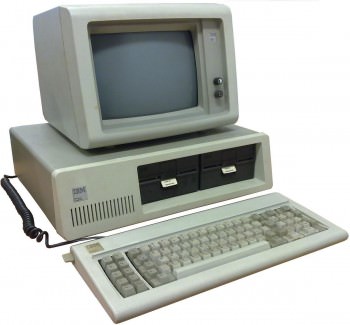
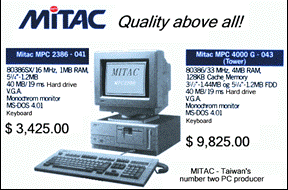
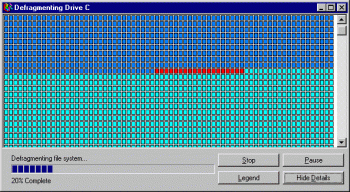
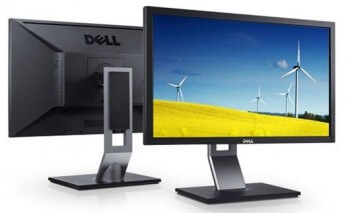
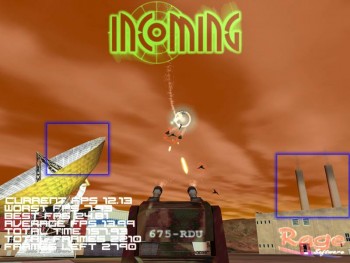
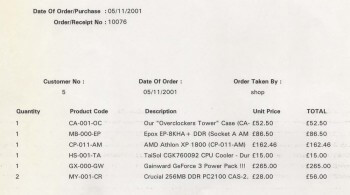
In school, we worked on boards which contained simple AND & OR, plus who knows what components to make a clock, count down timer and so on using diodes (and this was in binary).
First computers were main frames, where you punched out cards. One card was one line. Then the first generation of keyboard terminals allowed one to program using Basic. This was pre-personal 8088, Mindblower!
wow I remember monotone fonts (neon green) 5 1/4 disks, when manufacturers gave you nice binders with information on your computer with tabs in it. One of my computers in the 90’s was a Gateway, it was a 486 & it came with a cow colored binder with an additional binder with all the CD’s for it. Huge CRT Monitor, I thought I won the lottery it was so cool. The thing is they were more expensive, this one set us back about $2,000.00
My first computer was a Commodore 64, complete with 5 1/4″ disk drive and 40 character screen. Lots of learning done there.. Then moved up to an XT with a huge 30 Meg hard drive and an 80 character screen.
My first machine was a Gateway running W98 and a Pentium 3 CPU. Used to love to play Pac Man and Mario Bros on that old Gateway CRT. After this machine broke I got the PC build bug, I read, I studied, and finally worked up the nerves for my first build. Perl865 Mobo, 2GB ram, Ati 9550 GPU, Pentium 4 3.2MHz CPU, 450 watt PSU, Antec Sonata case. It ran well in it’s days and believe it or not it is still running. Daniel.
When I was aware I had a brain, my first computer, then I had a frame with wires and wooden beads, my second computer, called an abacus, and they used currently in Japanese schools before the kids are allowed near a calculator/computer from which they do not learn anything.
Interesting perspective Janik and I too learned maths with an abacus back in the 60’s. I also learned Latin, algebra and calculus, used log tables and a slide rule. Some of that knowledge I used in the real world, but not all of it.
Your claim, facetious though it may be, that kids learn nothing from calculators and computers is bogus in the extreme. I for one am very glad that computers have enriched our lives by making complicated tasks so much easier and much less mundane.
Welcome to 2015.
My first PC experience was a Timex Sinclair. It was a PITA to program, but watching our creations work on the TV screen was mesmerizing! When I started in the corporate world they were using stone tablets and disk packs – The “drive” was the size of a small man and you removed the actual platters! http://www.tpsoft.com/museum_images/CDC%20Hard%20Disk%20Pack%202.JPG
Our “new” technology was 8 inch floppies! Here’s a nice comparison shot… the big one is 8″ – https://c1.staticflickr.com/1/28/67613265_558e81a471_b.jpg.
My very first computer (if you could call it that) was a TRS-80 which loaded programs from a tape player. Loading programs was entirely volume sensitive so the user needed to maintain a record of what programs loaded successfully at what level of volume via a process of trial and error.
I taught myself to code in “basic” at that time and used to write little programs for the kids, one where they could type in text and the computer would then “say” whatever they’d typed in. A talking computer was quite a novelty in those days and the kids loved it.
My first was a VIC 20!!! Followed by a Commodore 64. They used the TV for a monitor. It had a little cassette tape player for memory.
Ah yes those were the days! Sitting infront of my Kreisler colour TV watching all the pretty colours wend their way across the screen making lovely patterns. Or I could do some maths or type some words & save them to my cassette. I still have those cassettes but not the computers.
I took a break from my own personally owned technology until Windows 96. During that break I wrote in languages like Cobal. Gee I can’t even remember how to spell it now let alone read it! Then I did data entry using DOS 1 & 2 I think it was.
These days I am so happy to just be free to click or draw my finger across the screen & have the pc do it all for me.
Clearly there are many whose experience in computers goes way back and it’s great to read everyone’s stories, thanks!
I built a computational device from a sheet of die-cut plastic in the late 1960s. The kit included some springs, a few plastic tubes, and some rigid plastic frame parts. It went together in an afternoon, and I used it for a math project in ninth grade, adding and subtracting numbers up to, let’s see, maybe 16?
I built a Heathkit computer, maybe the size of a modern suitcase, as a kit out of Radio Shack in the mid-1970s. No monitor, no keyboard, no storage media. It had switches and lights and 4K of memory, though it was hard to imagine writing a program that big. This machine was good at light shows, not much more.
You said earliest…
Great stuff John!
Did you ever write up the project details?
My earliest memory of computing was working on Canada’s first commercial digital computer (and only the second in North America), the Ferranti Mark 1, the same model of computer that Alan Turing worked on.
You can read about it at http://www.ferut.ca,
Somber note, I may be the last living person to have worked on that computer. I’ve inadvertently become a part of early computing history.
The first computer I used was an IBM 7040 serving as an I-O/task manager for an IBM 7094 (the operating system was called CHAOS) and the first I managed was an IBM 1130 with 16k words of memory (words were 16 bits long), On both input was via punched cards, output was via punched cards or line printers on standard greenbar paper. The first I owned was an Apple II+. The first PC-compatible was an Eagle luggable with one megabyte of memory and a 20meg hard drive.
Harvey
Well for me it was a Texas instrument TI/94 or something like that!
Making a space invaders game was real fun then..especially with the “extended Basic” module.
Then an Amiga 1000 followed by all of them except the 2500 model.
But I began with simple And, Nand and dtype flip flops and scmjitt triggers etc etc!!
Mostly TTL until Cmos arrived.
After production of the Amiga I went with Intel and windows.
Phew.
Looking back I think I had most fun with the Texas Instrument? <maybe because it was the first but I certainly learnt a lot from Basic programming.
My first computer was a Kapro that use the CPM computer language. It had two 5/14 floppy drives and no hard drive. One floppy was the program the other your storage disk. Funny thing is I still have it and it actually works. I need to donate it to a computers of the past display.
My first computer experience was a Heathkit , interesting but not the love of my life, that came with my introduction to my TRS80 Color Computer. After having no luck finding any kind of info, by going to the library every two days, I had to resort to “like minded individuals” and joined the TRS80 CC club. We had meetings in most major cities in CA. The information at that time was priceless. I still remember a quote in a pamphlet at the time titled something like Sloppy Programing” and it stated “If you need more than 4k to write a solid working program you don’t know how to program!” Wow, look at us now
Also in response to Jim H. comment. I still can still hear the static hiss from the tape player and remember the agony of trying to locate a particular program I wrote on a tape that recorded in serial order. those 5.25 disks were from heaven.